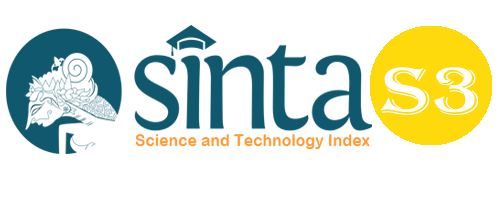Islamic Philanthropy (Zakat and Waqf) As A Form of Economic Crisis Management
Abstract
The purpose of this study is to describe the practice of Islamic Philanthropy, especially in the field of zakat and waqf. The nect objective is to analyze the correspondence of phenomenon of Islamic philanthropy, especially in the field of zakat and waqf, with the problem of the economic crisis. The method used in this research is descriptive qualitative. The data collection technique used the literature study method, called the study of documentation. Data analysis in this study used qualitative analysis and then draws conclusions using the deduction method.The result of this study indicate that the practice of philanthropy is a form of human’s love expression for others which is implemented by giving, both material and non-material to those in need. Etymologically, philanthropy consists of twi Greek words, philia (love) and anthrophos (human), which in general can be interpreted as a form of love for fellow human beings. There are four dimensions of Islamic philanthropy, called zakat, infaq, sadakah, and waqf, but this study focuses on zakat and waqf. Zakat itself is the expenditure of part of the property according to sharia rules and is distributed collectively to the poor, while waqf is the expenditure of part of the property with the purpose of increasing the productivity of the people. With these two practices, the economic crisis is likely to be overcome to some extent.
Keywords
Full Text:
PDFReferences
Amar, Faozan, (2017), "Implementasi Filantropi Islam di Indonesia". Al-Urban: Jurnal Ekonomi Syariah dan Filantropi Islam, Vol. 1 No. 1, 2017, pp. 1-14. Available in DOI: 10.22236/alurban_vol1/is1pp1-14
Arif, S. (2019). Influence of Leadership, Organizational Culture, Work Motivation, and Job Satisfaction of Performance Principles of Senior High School in Medan City. Budapest International Research and Critics Institute-Journal (BIRCI-Journal). P. 239-254
Hafidhuddin, Didin, (2002), “Zakat dalam Perekonomian Modern”. Gema Insani Press: Jakarta.
Ibrahim, Barbara, (2008), "From Charity to Social Change: Trends in Arab Philanthropy". American University in Cairo Press: Kairo.
Karmeli, Elly dan Siti Fatimah, (2008), “Krisis Ekonomi Indonesia”. Journal of Indonesian Applied Economics, Vol. 2 No. 2, October 2008, pp. 164-173.
Kasdi, Abdurrohman, (2016), “Filantropi Islam untuk Pemberdayaan Umat (Model Pemberdayaan ZISWAF di BMT Se-Kabupaten Demak)”. Iqtishadia, Vol. 9 No. 2, 2016, pp. 227-245.
Linge, Abdiansyah, (2015), “Filantropi Islam sebagai Instrumen Keadilan Ekonomi”. Jurnal Perspektif Ekonomi Darussalam, Vol. 1 No. 2, 2015, pp. 154-171.
Makhrus, (2018), “Dinamika dan Aktivisme Filantropi Islam dalam Pemberdayaan Masyarakat”. Litera: Yogyakarta.
Niati, D. R., Siregar, Z. M. E., & Prayoga, Y. (2021). The Effect of Training on Work Performance and Career Development: The Role of Motivation as Intervening Variable. Budapest International Research and Critics Institute (BIRCI-Journal): Humanities and Social Sciences, 4(2), 2385–2393. https://doi.org/10.33258/birci.v4i2.1940
Rahman, Muh. Fudhail, (2009), “Wakaf dalam Islam”. Al-Iqtishad, Vol. 1 No. 1, January 2009, pp. 79-90.
Sabiq, Sayyid, (1971), “Fiqih Wakaf”. Dar al-Arabi: Lebanon.
Saripudin, Udin, (2016), “Filantropi Islam dan Pemberdayaan Ekonomi”. Jurnal Bisnis dan Manajemen Islam, Vol. 4 No. 2, December 2016, pp. 165-185.
DOI: https://doi.org/10.33258/birci.v5i3.5979
Article Metrics
Abstract view : 60 timesPDF - 69 times
Refbacks
- There are currently no refbacks.

This work is licensed under a Creative Commons Attribution-ShareAlike 4.0 International License.

This work is licensed under a Creative Commons Attribution-ShareAlike 4.0 International License.

_.gif)

















_.gif)



